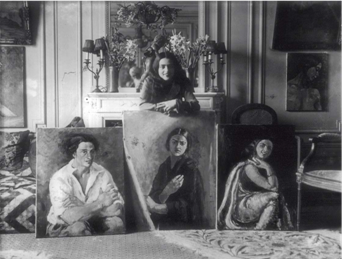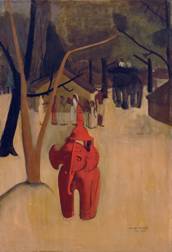| |
AMRITA SHER-GIL
(1913 – 1941)
 Amrita Sher-Gil is an emblematic figure representing modernism in India. In much the same way as her contemporary Frida Kahlo, Amrita used her ambiguities of nationality and sexuality, in conjunction with modernist aesthetics and a liberal social education, to question what and how an Indian artist, let alone a female one, might be. The two women have much in common: the cult about India/ Mexico; living and working under colonial circumstances in a world influenced by the West; a utopian-like mixture of very different cultures; protagonists of feminist assertion and free sexuality. Amrita Sher-Gil is an emblematic figure representing modernism in India. In much the same way as her contemporary Frida Kahlo, Amrita used her ambiguities of nationality and sexuality, in conjunction with modernist aesthetics and a liberal social education, to question what and how an Indian artist, let alone a female one, might be. The two women have much in common: the cult about India/ Mexico; living and working under colonial circumstances in a world influenced by the West; a utopian-like mixture of very different cultures; protagonists of feminist assertion and free sexuality.
Amrita Sher-Gil was born in 1913 in Budapest and grew up in an artistically inclined family of cosmopolitans, who at the beginning of the 20th Century journeyed between Europe and India. Amrita lived in Paris from 1929-1934, studying at the École des Beaux Arts and was a welcome guest in the Paris salons. During this period between the two world wars, she was influenced by Realism and, particularly, by Paul Gauguin. On her return to India in 1934 her discovery of classical and medieval Indian art, the early frescoes of the Buddhist cave temples of Ajanta, the sculpture of Ellora and the murals in the Mattancheri Palace in Cochin, as well as the various schools of miniature painting: Mughal, Rajput, Basholi and Jain, led to a series of visual and contextual reorientation in her artistic quest and her passionate if tragically brief pursuit of pictorial expression. Amrita was on the threshold of becoming a truly modern Indian painter when sadly, her life was cut short at the age of 28.
   
|

